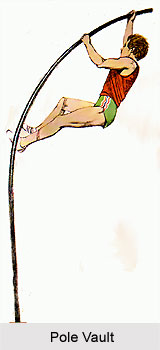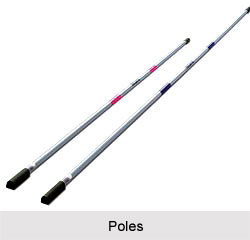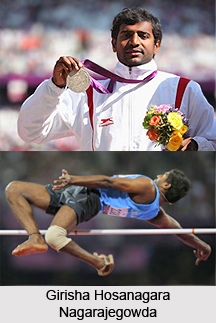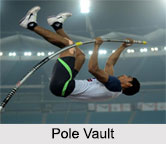 Terminology in pole vault is an important aspect that adds dimension to the game. Some of the important terms that have been added to the game are as follows:
Terminology in pole vault is an important aspect that adds dimension to the game. Some of the important terms that have been added to the game are as follows:
Bar: This refers to the cross bar that is suspended above the ground by the standards.
Box: This is actually a trapezoidal indentation in the ground with fibreglass or metal covering at the end of runway in which vaulters "plant" their pole. The back wall of the box is closely vertical and is nearly 8 inches in depth. Until it is level with the runway, the bottom of the box, slowly slopes upward approximately 3 feet. The covering present in the box actually ensures the pole will slide to the back of the box without catching on anything. The covering`s lips partly cover onto the runaway and also ensures a smooth and thorough transition from all weather surfaces so a pole being planted does not catch on the box.
Drive Knee: In the pole vault event, during the phase of the plant, the knee is actually driven forward at the time of "takeoff" to actually help propel the vaulter upward.
Grip: This is the vital during the game, and is the case where vaulter`s top hand is on the pole. With the improvement of the vaulter, his grip moves up the pole incrementally. The other hand is characteristically placed shoulder-width down from the top hand. Hands are actually not allowed to grip the very top of the pole (their hand perpendicular to the pole) for safety reasons.

Jump Foot: This is also known as take-off foot. It is actually the foot that vaulter uses to leave the ground as he begins his vault.
Pit: The mats used for landing in pole vault.
Plant Position: This is the position where a vaulter with the pole reaches the back of the box and the vaulter begins his vault. His arms are fully extended and his drive knee begins to come up as he jumps.
Pole: The fibreglass implement used, actually assists the vaulters up and over the bar. One side is kept stiff than the other in order to ensure that the bending of the pole after the plant. In order to determine which side of the pole is tiff, the vaulter may rest the pole on his arm and this may help him to gauge the stiff of the pole.
Standards: The equipment that holds the bar at a particular height above the ground. Standards may be adjusted to raise and lower the bar and also to adjust the horizontal position of the bar.
Steps: As the box is in static position, the vaulters must also need to adjust their approach accordingly in order to make sure they are in proper position when attempting the vault.
Swing Leg or Trail Leg: The trail leg or the swing leg is also the jump foot. After the vaulter has actually left the ground, the leg that was touching the ground last stays extended and swings forward to assist propel the vaulter upwards.
Volzing: This is a method of pushing or holding, the bar back onto the pegs while jumping over a height. Though, this now not in the rule book of pole vault anymore but this method actually needs huge amount of skills.



















